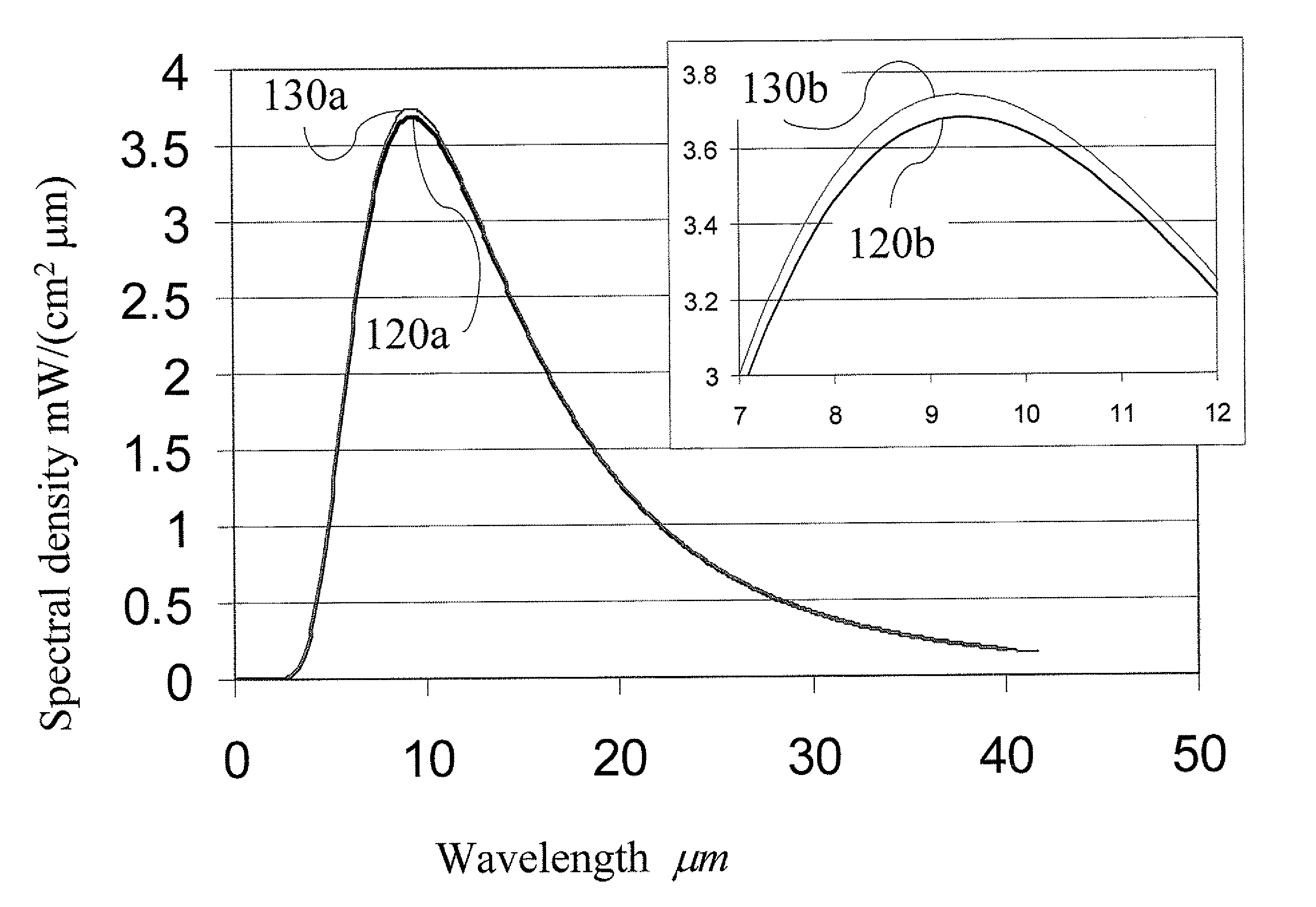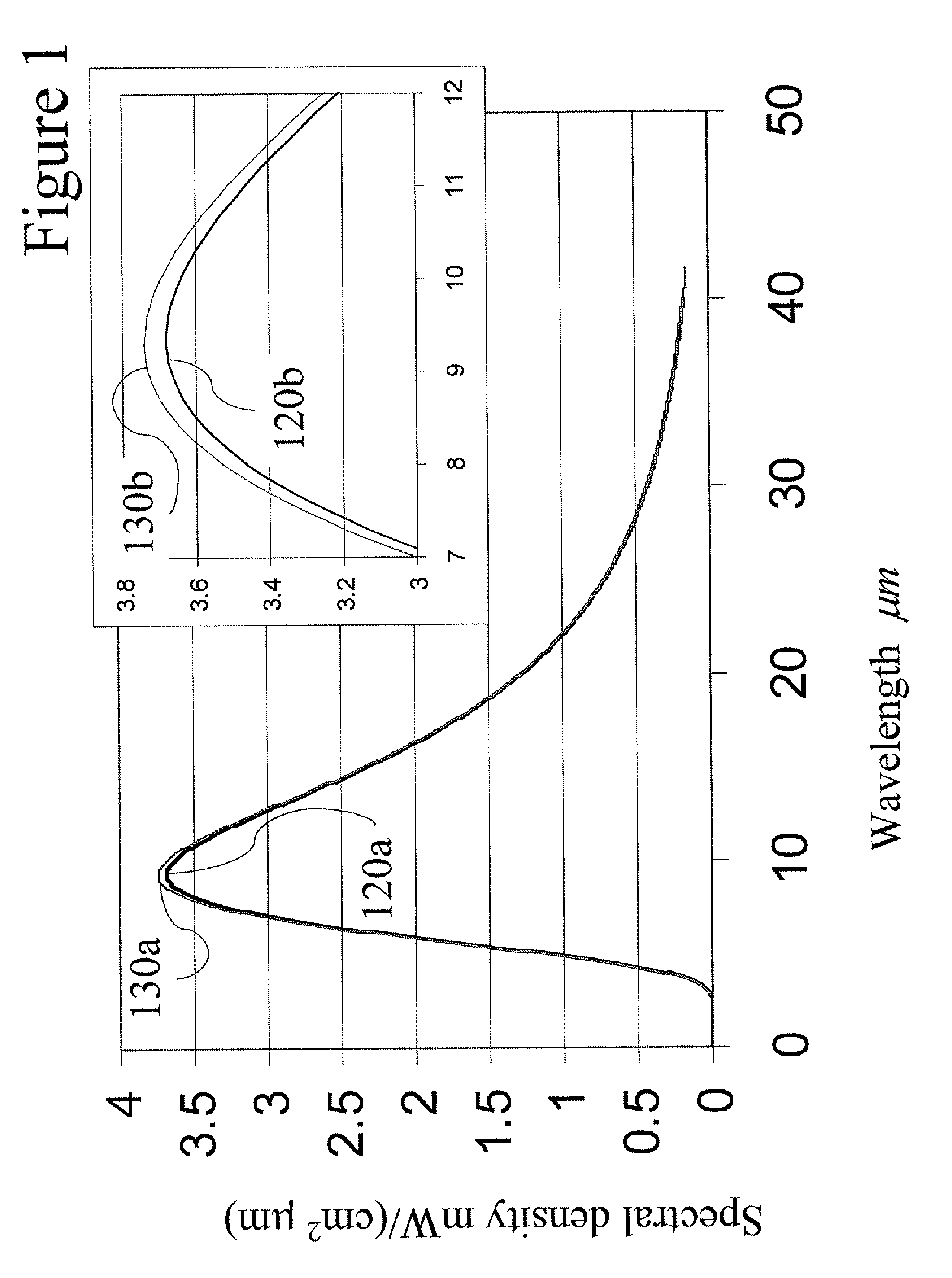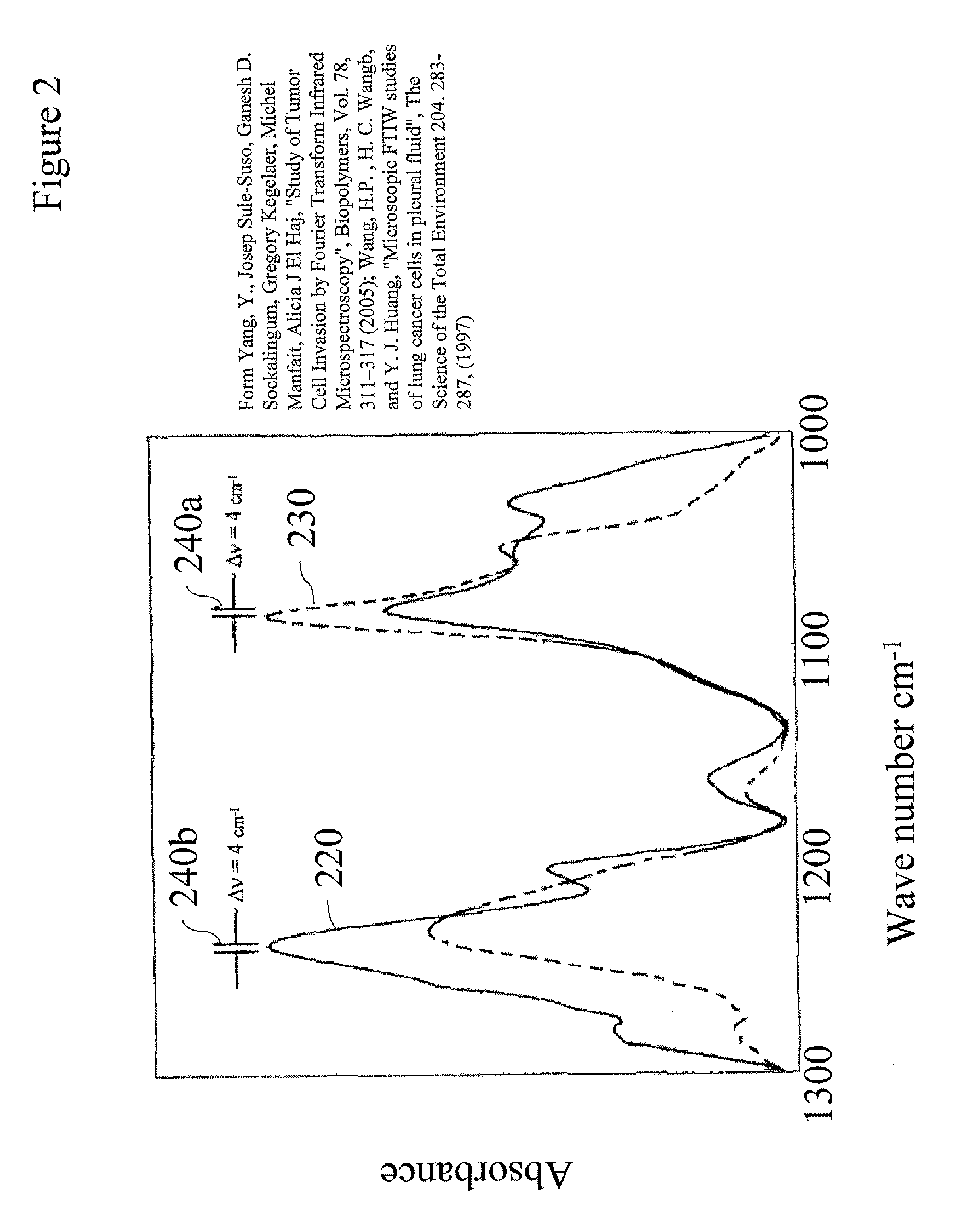Method Of Infrared Thermography For Earlier Diagnosis Of Gastric Colorectal And Cervical Cancer
a gastric colorectal and cervical cancer technology, applied in the field of infrared thermography for earlier diagnosis of gastric colorectal and cervical cancer, can solve the problems of inconvenient use, subjective detection of abnormalities, and high cost of current visible imaging techniques
- Summary
- Abstract
- Description
- Claims
- Application Information
AI Technical Summary
Benefits of technology
Problems solved by technology
Method used
Image
Examples
embodiment 500
[0094] One who is skilled in the art of endoscopic imaging will understand that locating sensor 669 in distal end 665 of endoscope 650 allows capture of high quality MIR video images (not just local measurements of MIR radiation intensity as in measured by embodiment 500). Thus when using endoscope 650 to detect and identify an internal pathology MIR and visible images are used to discern various parameters of the pathology in the MIR and visual spectrum (for example asymmetry of the shape of the lesion, bordering of the lesion, color of the lesion and dimensions of the lesion). This allows earlier detection of cancerous and precancerous lesions, more precise identification of lesions and staging pathologies than visible imaging or local MIR measurements alone.
third embodiment
[0095] Attention is now directed to FIG. 7, which illustrates the current invention. The embodiment of FIG. 7 is a wireless capsule endoscope 750 having a batteries 775a-b which power a mid-infrared sensor 789 producing MIR images through a mid-MIR channel 793 and mid-MIR transparent dome 795. Endo scope 750 also includes a transmitter 797 and antennae 799 to transmit images to a signal-processing unit outside the subject. It is understood that unlike previous art capsule endoscopes, wireless capsule endoscope 750 detects passively irradiated blackbody MIR, therefore wireless capsule endoscope 750 does not requires a light source and thus, endoscope 750 requires less power than previous art capsule endoscopes. Therefore, batteries 775a-b are smaller those of previous art capsule endoscopes. One skilled in the art of wireless capsule endoscopes will realize that it is possible to add a receiver and actuator to endoscope 750 and use endoscope 750 for various active regimes of measurem...
PUM
 Login to View More
Login to View More Abstract
Description
Claims
Application Information
 Login to View More
Login to View More - R&D
- Intellectual Property
- Life Sciences
- Materials
- Tech Scout
- Unparalleled Data Quality
- Higher Quality Content
- 60% Fewer Hallucinations
Browse by: Latest US Patents, China's latest patents, Technical Efficacy Thesaurus, Application Domain, Technology Topic, Popular Technical Reports.
© 2025 PatSnap. All rights reserved.Legal|Privacy policy|Modern Slavery Act Transparency Statement|Sitemap|About US| Contact US: help@patsnap.com



